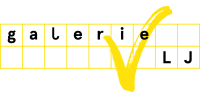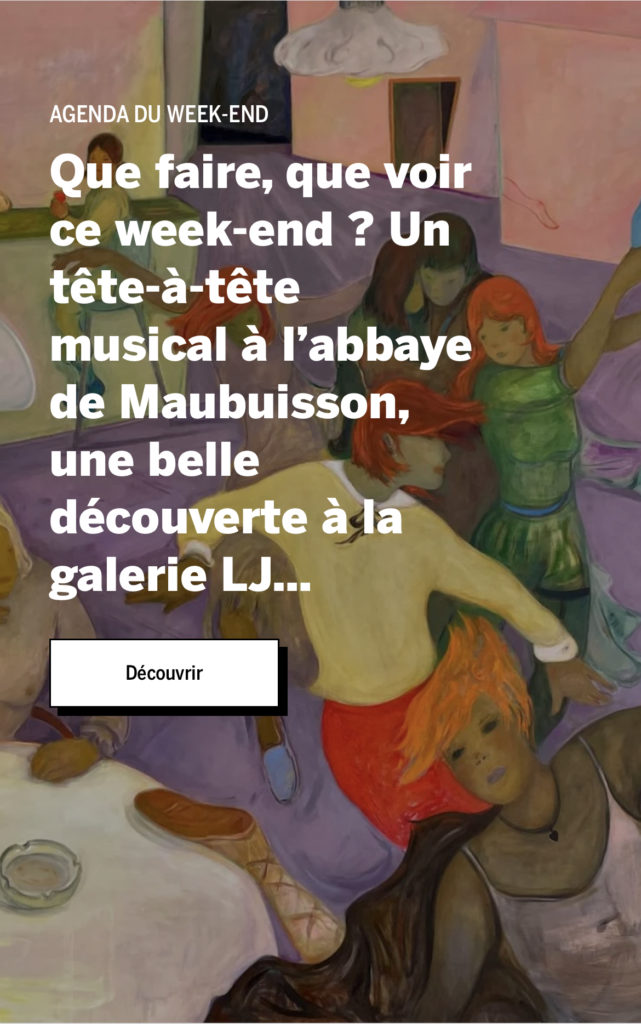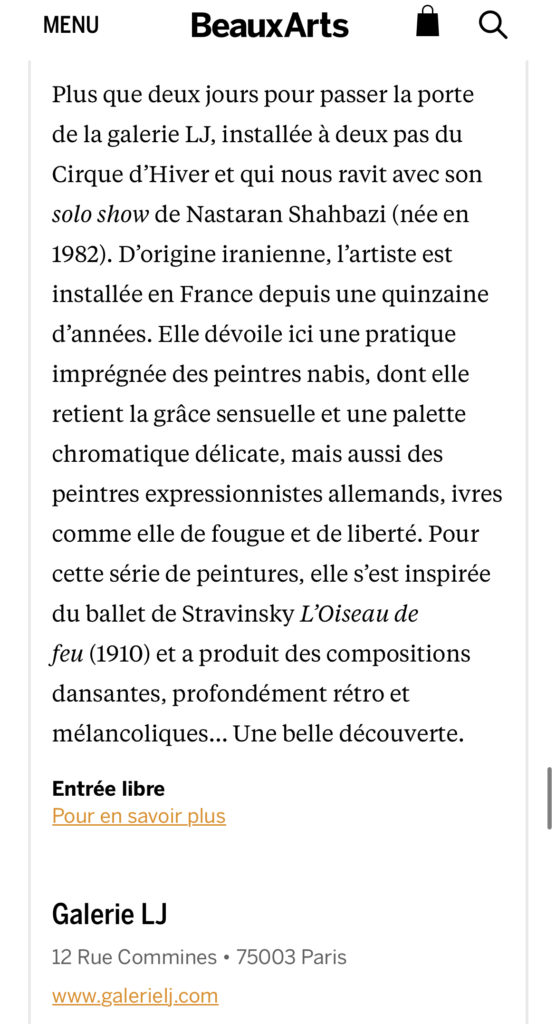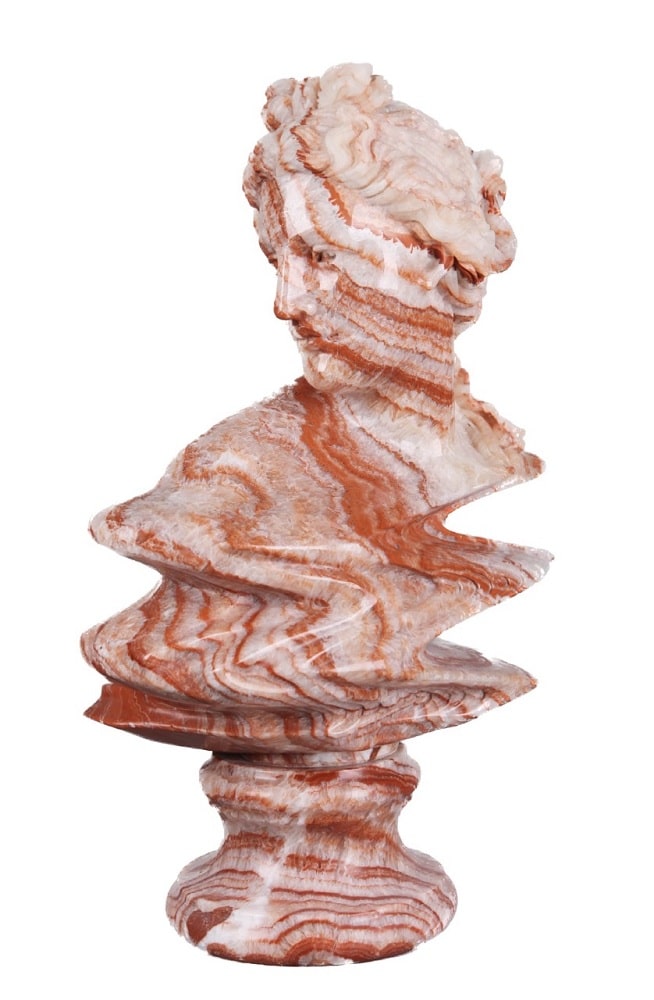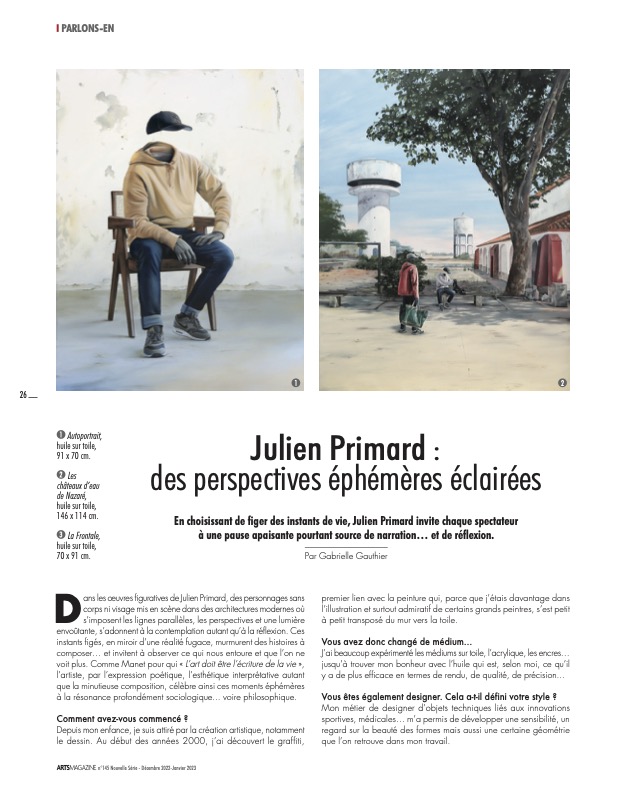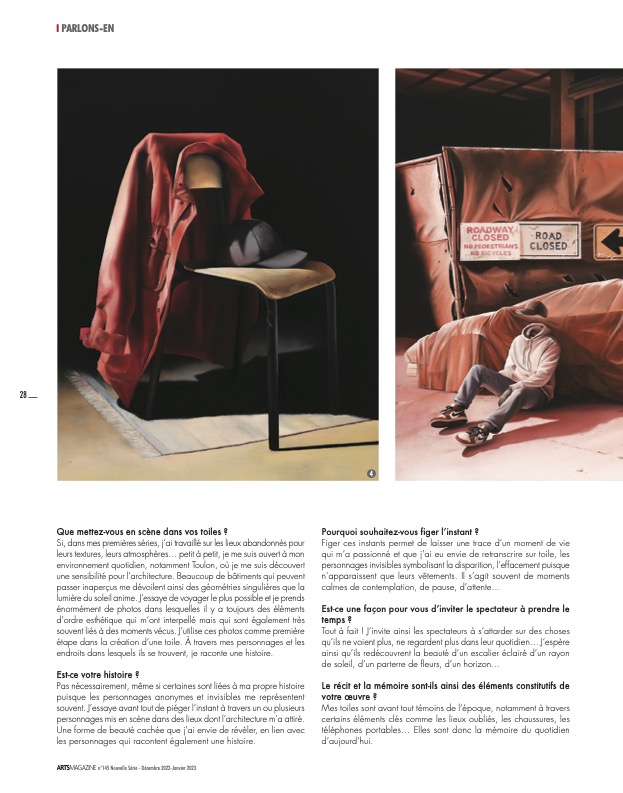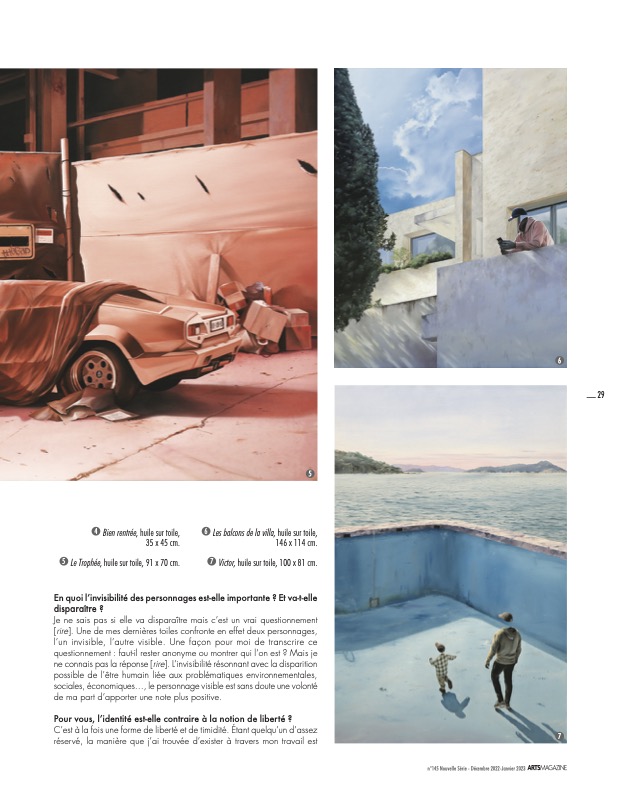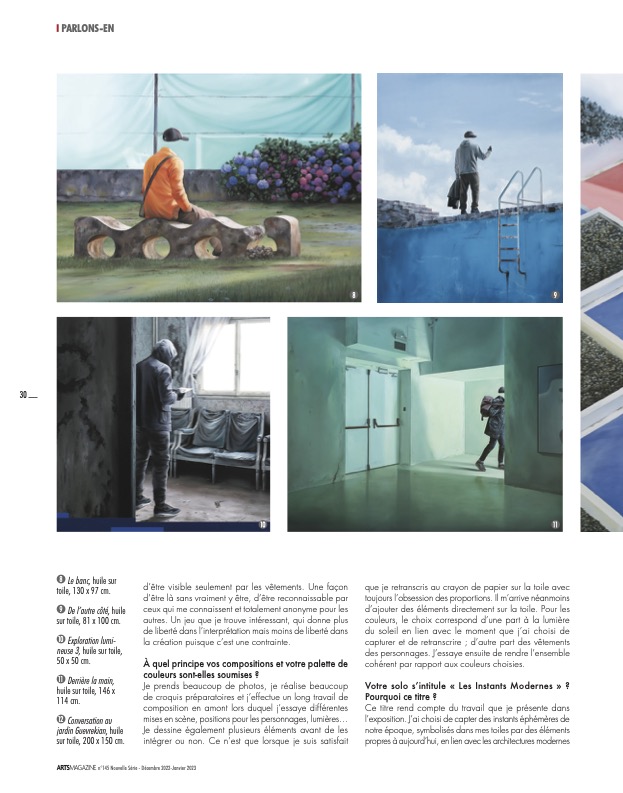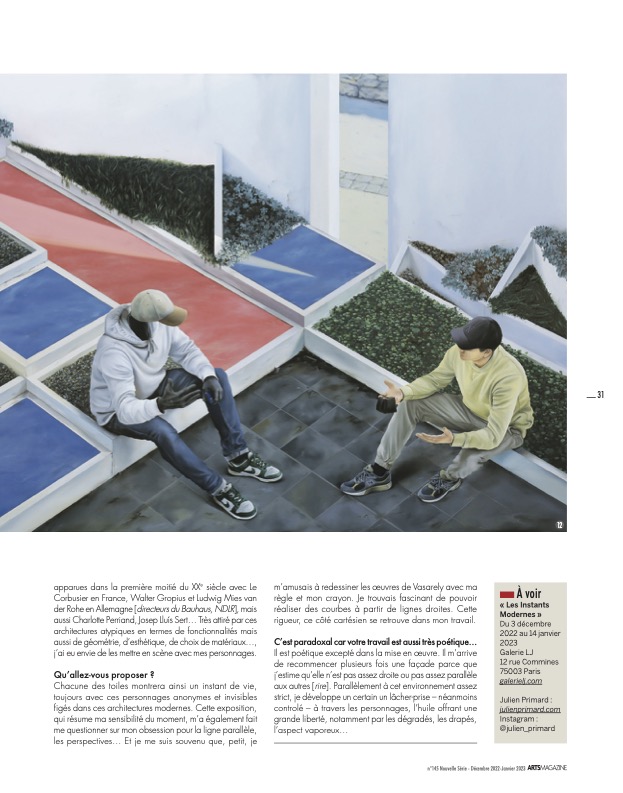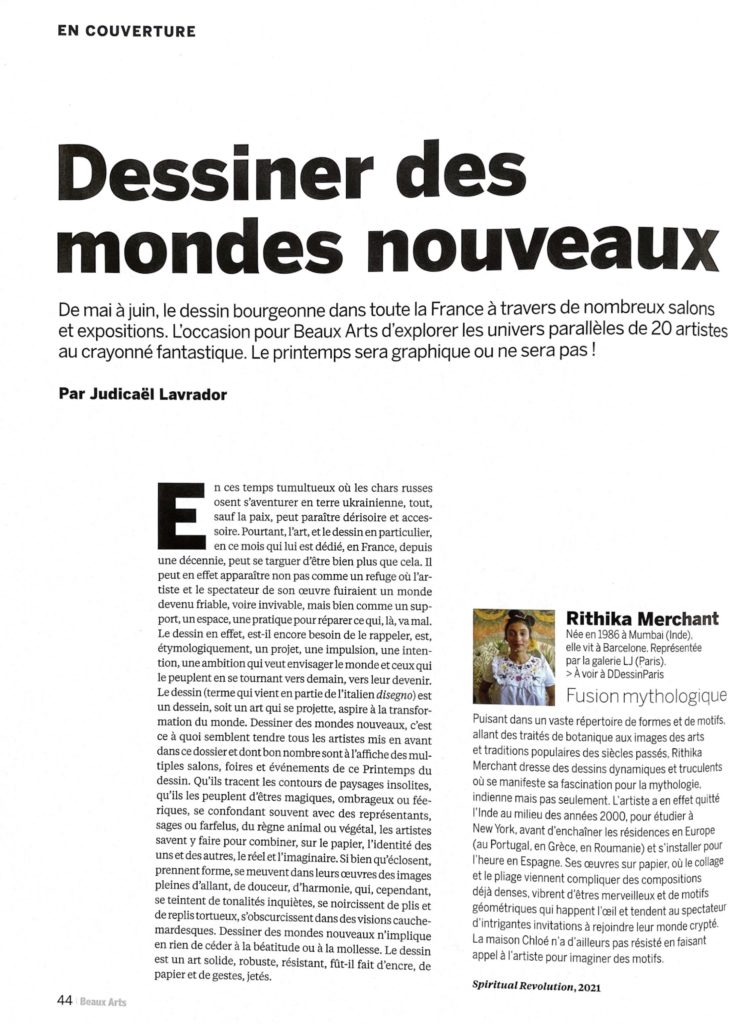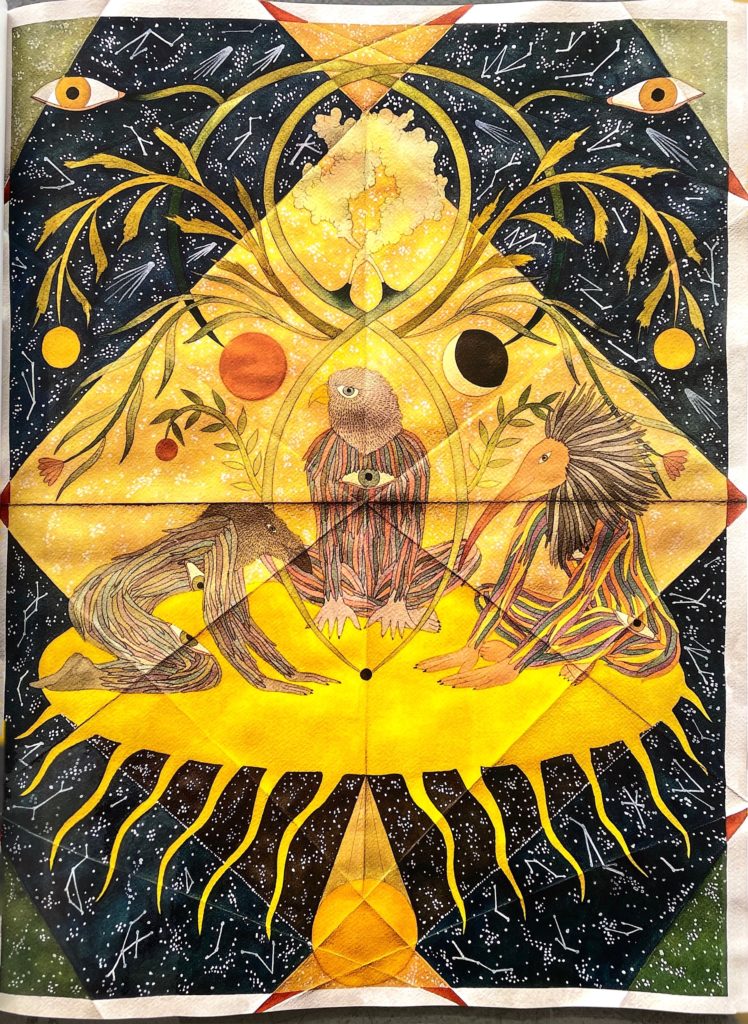Mu Pan’s interview (Chinese) in Taiwanese magazine Men’s Uno
只為自己所畫!專訪藝術家潘慕文 Mu Pan:「就算我躺下了,這個宇宙還會繼續的延伸!」
作家 / Alec 報導

從小在台中眷村長大的藝術家潘慕文 Mu Pan,20 歲移民美國,目前生活在布魯克林,他以大型史詩畫而聞名,近期更與導演 Ari Aster 合作,在鄉謠恐怖片《仲夏魘》裡出現他的作品。目前正忙著要把導演 Darren Aronofsky 訂製作品完成的潘慕文,本次也接受我們的專訪,與我們談談他是如何看待自己的作品,以及對當代藝術的看法。
談到這次的當代藝術博覽會的展出,除了蠻開心許多民眾會在畫作前駐足下來外,也不排除之後會再次來台展出的可能性。對於創作,他從不打草稿,直接下筆,跟著想法與內心的感觸去遊走於畫布上。他也提到在創作時,差不多畫兩個禮拜後,會開始厭倦,所以要一直想辦法萌生出新鮮的東西,「我一開始會有一個主題,可我就是且畫且走,它如果要變的話,就讓它變,讓它自然生長,完全不要去控制。」

至於會開始創作生涯,他坦言從小就喜歡畫畫,加上被藝術家、畫家影響,因此畢業後就跌跌碰碰做一些工作,除了養活自己外,也是為了讓自己能有辦法投入到創作之中,「剛開始就打零工,做過很多雜工,還做過大藝術家的助手,就是為了要養我自己的東西,直到後來跟法國的畫廊 Galerie LJ合作以後, 加上我開始在大學教課,才完全變成全職創作。」這一路走來,雖然跌跌撞撞,但他深信每個人都有他心目中的理想,而壞事是替好事鋪路罷了。
過程中有沒有停下來、放棄的想法?潘慕文很直率地說:「每天!所以不能去想,你要跟賽馬一樣,就像是 Horse Blinders 讓馬只能直視前方,然後一直畫一直畫,不要去想那些事情。」為了維持創作泉源,他也看了很多書與畫冊,「要找到屬於自己喜歡的類型,知道要走什麼方向。像我對現代藝術完全沒興趣,我反而喜歡有故事的印度古畫、波斯古畫,還有西藏、東南亞,任何沒有被西方影響的事物。」此外,他也擅於把神話故事轉化到自己作品中,「還有我對某些人的不滿也會放在裡面,因為作品是我自己的延伸。」

如何看待藝術家這個身分?他反而自嘲說不認為自己是個藝術家,也不懂什麼叫藝術,「這麼多年下來,能做的,人家都已經做過了。我只相信有市場,像我最喜歡的畫家是 Henry Darger,他連什麼是藝術都不知道,到死了以後,人家才在他房間裡面找到一堆畫。他活在自己的世界裡面,他的東西就是他的延伸,完全出自他自己,他沒有畫給任何人看,也沒有想過賣,不是為了市場去做。對我來說,我完全不在乎主流,我也不需要人家來關注我是誰,也不需要去認識名流。」
從小被迫接受基督教的潘慕文,談起宗教這個話題時,他也不避諱的說現在已經沒有信仰宗教,只信仰大自然!不過他也提到自己會反覆讀《道德經》,「只是讓我去思考,而且我也讀過一些舊約聖經,你要知道裡面有智慧,不要被信仰左右。」

而這次在台北當代藝術博覽會的展出,是去年 10 月,他在 Hashimoto contemporary 紐約畫廊所展的新系列,是他創作的《Mu Universe》的第一章。在這個系列中,包含了他創造的生物,以及他是如何看待動物和人類之間的互動,「依賴以及互相不可缺少對方的關係。在故事裡,我把我過去所學,聽來的神話故事、歷史故事、生活中的觀察,以及宣洩我對我那從小被迫接受的宗教,所產生猶如叛逆少年般的反應。正因為這是一個只屬於我一個人的宇宙,我可以不用再去關心任何道德標準、任何事實或任何規則,我也不必關注人們如何看待我這個人,和我那些像嘔吐物般所謂的作品。」在這個匯集過去五十年人生經驗的系列裡,他可以一直創作下去,不用去設想下次要畫什麼,自然的讓宇宙延伸與膨脹。
而在台北當代所呈現的的是 milk03 之下衍生來的子系列,他們與主系列互相呼應。當然,為了這次特別的機緣,加上他也是台中眷村中滾大的小孩,因此,其中也多少加入了一點點台灣元素。「我不知道我會打算繼續在這個 Mu Universe 製作多少,我就和我之前所說的一樣,且畫且走,讓這整個宇宙伴著我一起走,走到我們雙雙躺下為止。但,就算我躺下了,這個宇宙還會繼續的延伸、擴張,沒有終點。」
訪談的最後,我們也想知道潘慕文是如何看待當代藝術?而他也很老實地說道,「就是給有錢人的產品,給你擠上名流的途徑,很多當代藝術都不是本人做的。像你看有多少人這樣走過去,但真正被一幅作品感動到,讓你想要做些什麼的作品,有多少呢?」
Photo:Alec
RELATED POSTS
